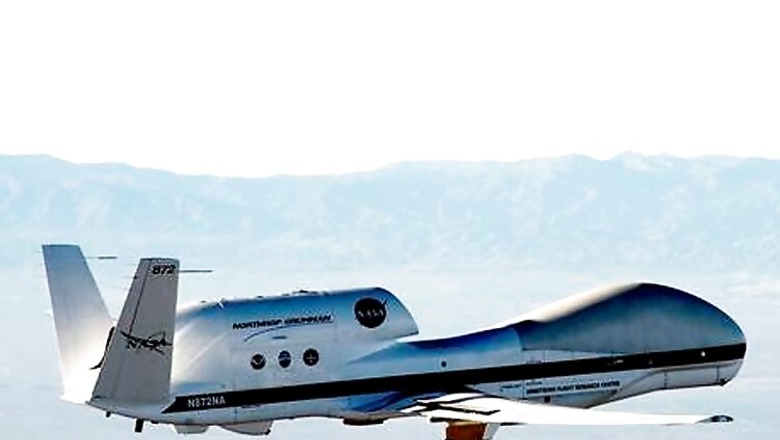
views
Washington: In a first, a unique remotely piloted aircraft from NASA is set to take off this week to improve track and intensity forecasts of hurricanes as part of the new generation weather forecast observations tools.
From now until the end of September, the aircraft called Global Hawk will fly over the Atlantic Ocean basin to collect data on temperature, moisture, wind speed and direction.
The Global Hawk is equipped with instruments to profile the inner workings of storms.
"We are flying the Global Hawk above hurricanes and other severe storms to refine it as a new, powerful tool to better forecast where hurricanes go and how intense they are,” said Robbie Hood, director of unmanned aircraft system programme at the US National Oceanic and Atmospheric Administration (NOAA).
Scientists will also test whether the data from the Global Hawk can help replace data collected by satellites in the unlikely event that a satellite goes down.
"The mission is part of NOAA’s work to improve our nation’s preparedness and resilience to hurricanes and other severe storms,” he said in a statement.
The real-time data will go into National Weather Service forecast models at the National Hurricane Center.
Operating from the aircraft ground control station located at NASA’s Wallops Flight Facility in Wallops Island, Virginia, NOAA will work with NASA scientists on the mission called “Sensing Hazards with Operational Unmanned Technology” (SHOUT).
The mission builds on earlier collaborative storm research led by NASA and will move the Global Hawk closer to being put into operational use as a weather forecast observations tool.
"The Global Hawk allows us to stay over these weather patterns a greater amount of time than manned aircraft,” added Gary Wick, NOAA’s lead scientist for the mission.
Global Hawk flies higher and longer than any manned aircraft.
It allows data collection from 60,000 feet, an altitude nearly twice as high as manned aircraft, to the ocean surface.
It can gather weather data continuously for up to 24 hours.
"It provides us with an observing tool that has the endurance of a satellite but provides finer resolution data and precision of an aircraft,” he noted.


















Comments
0 comment